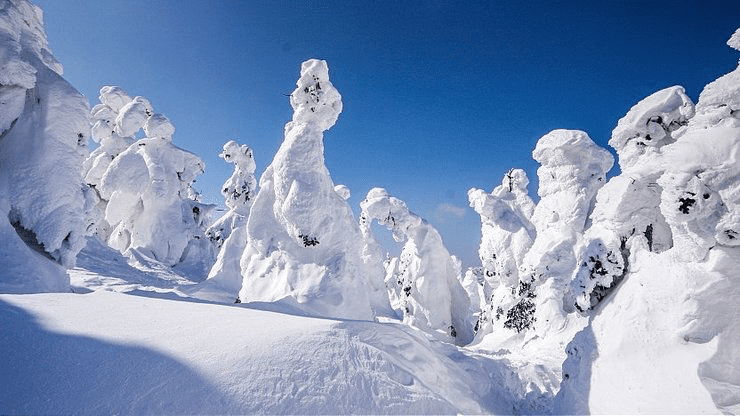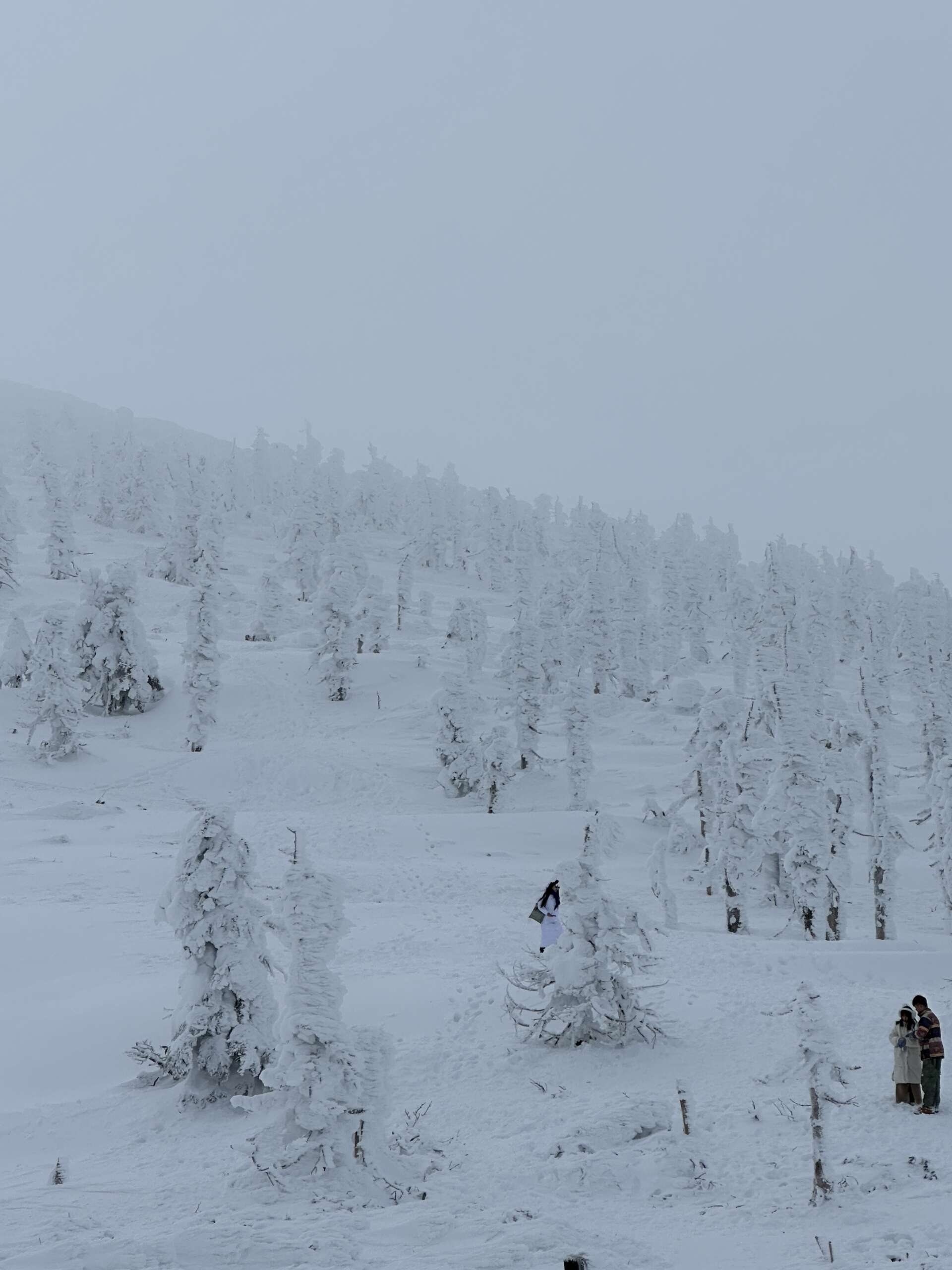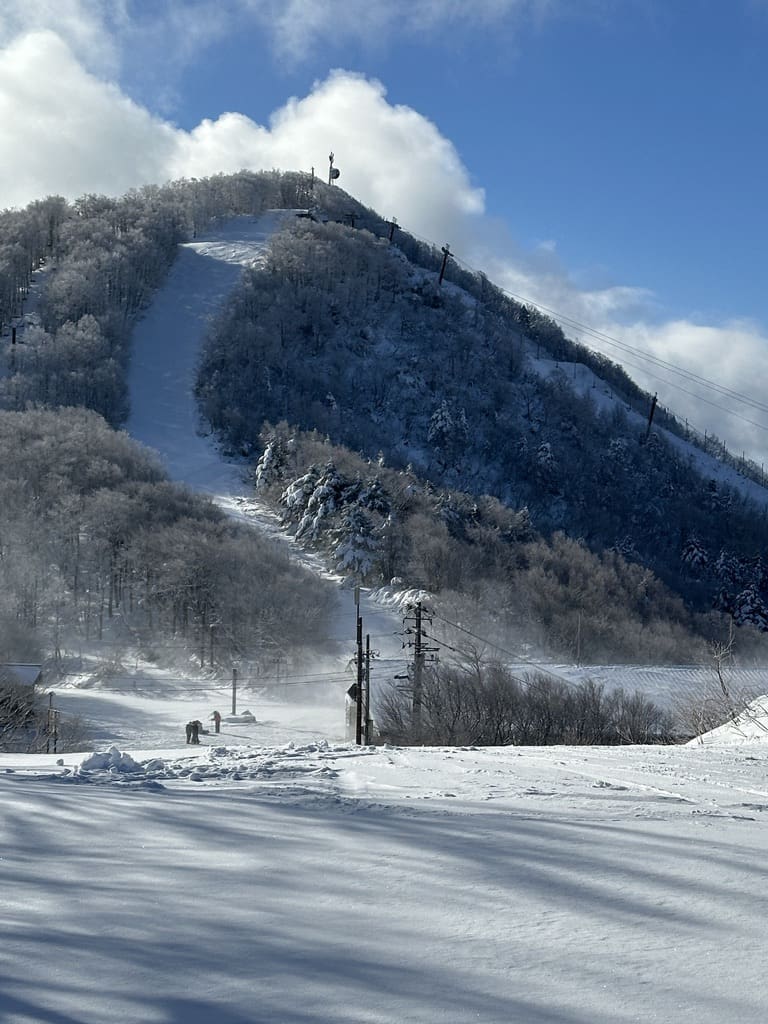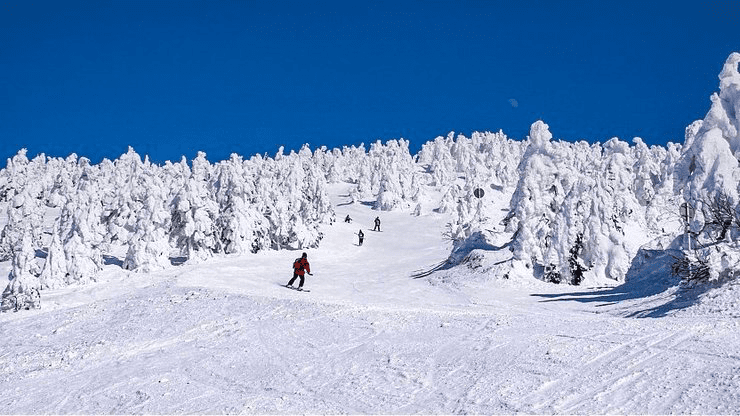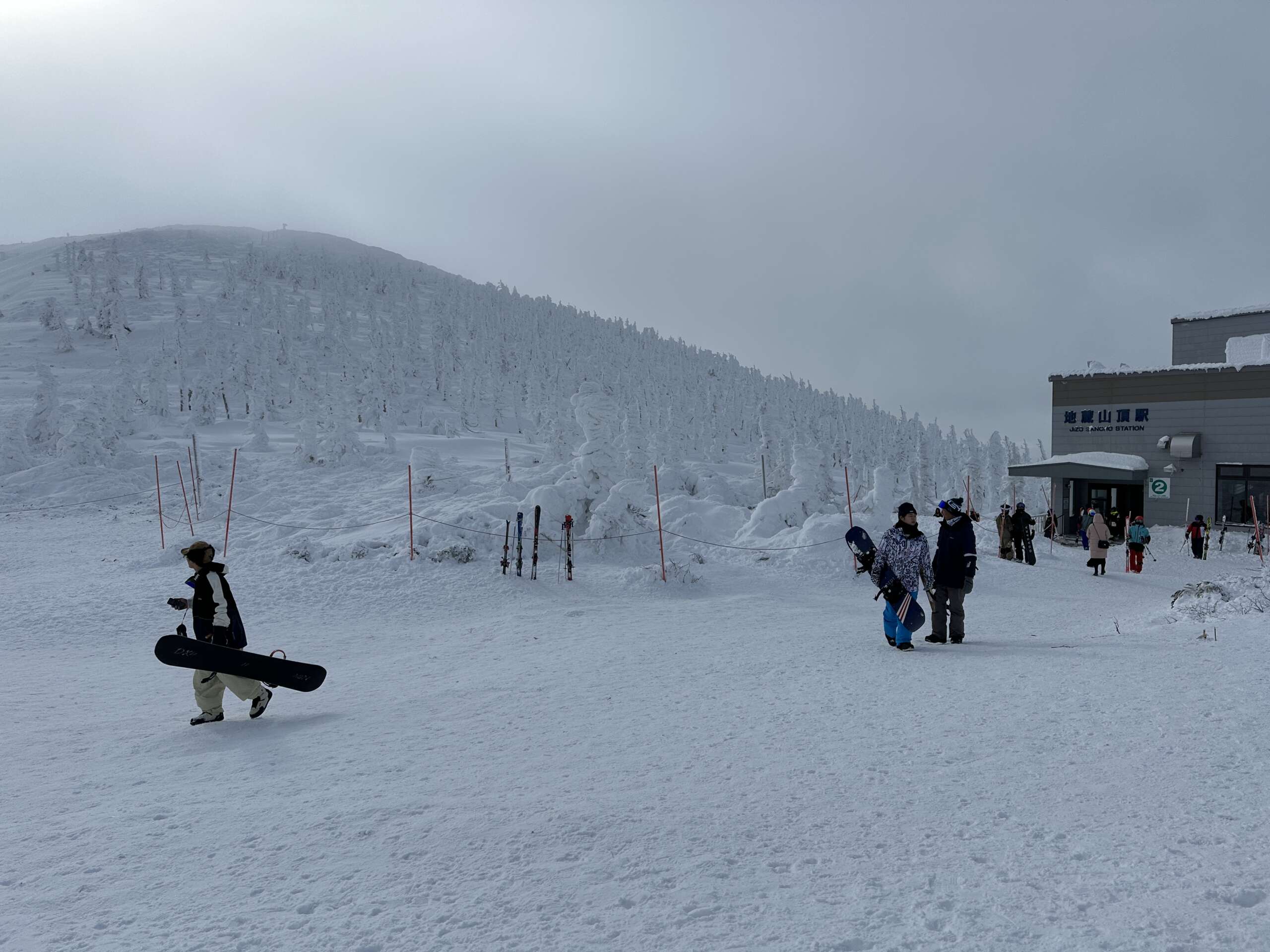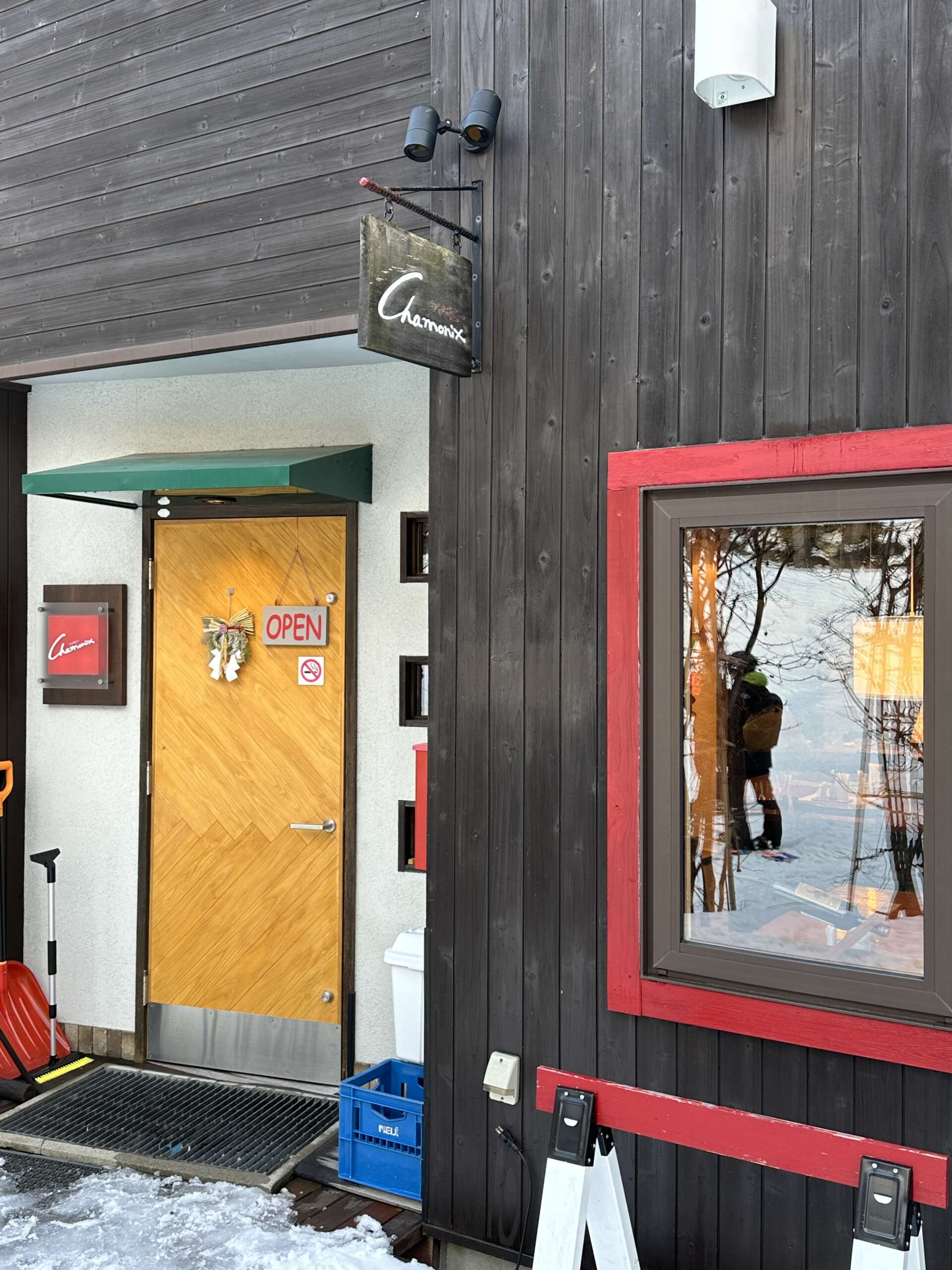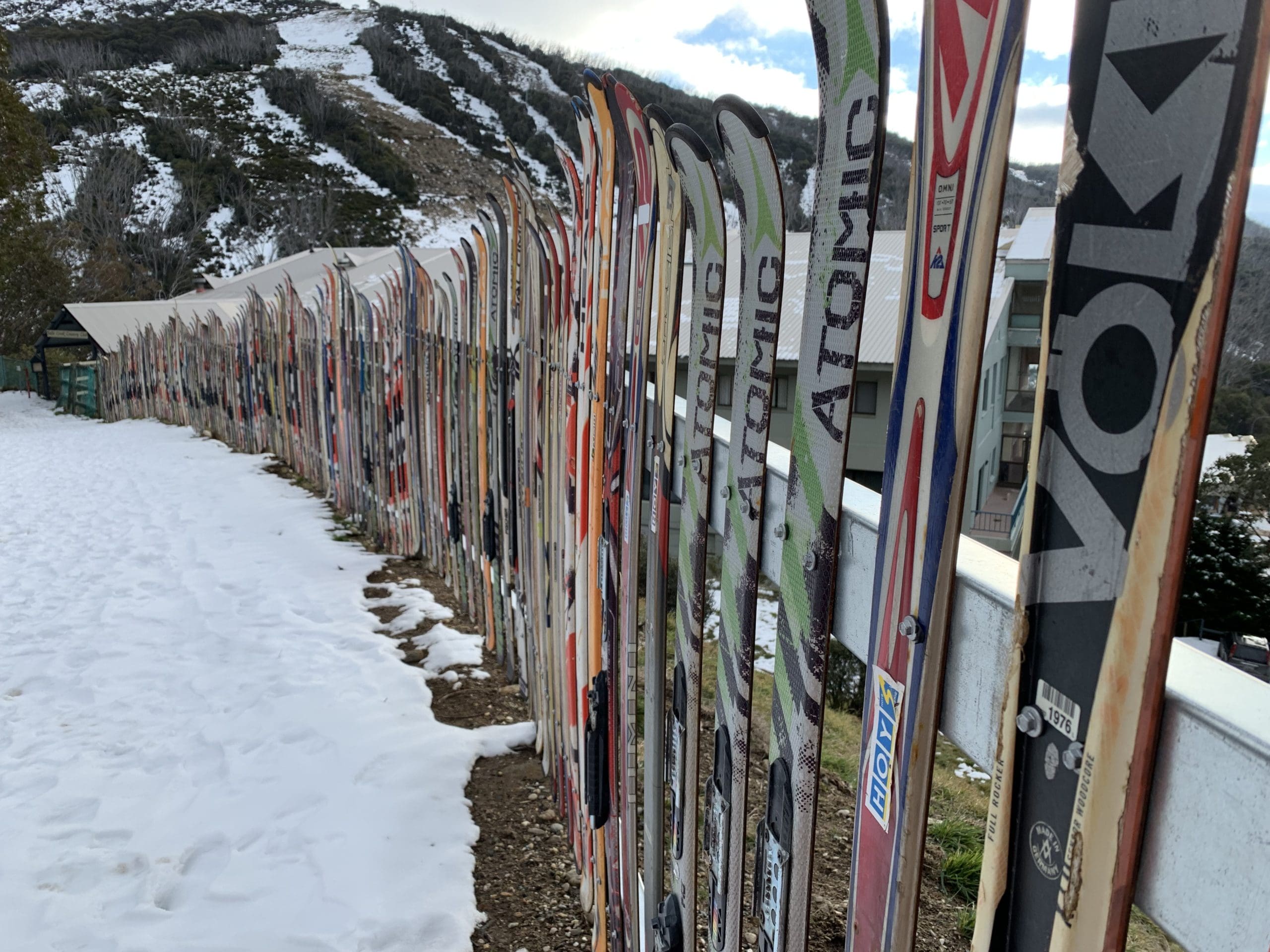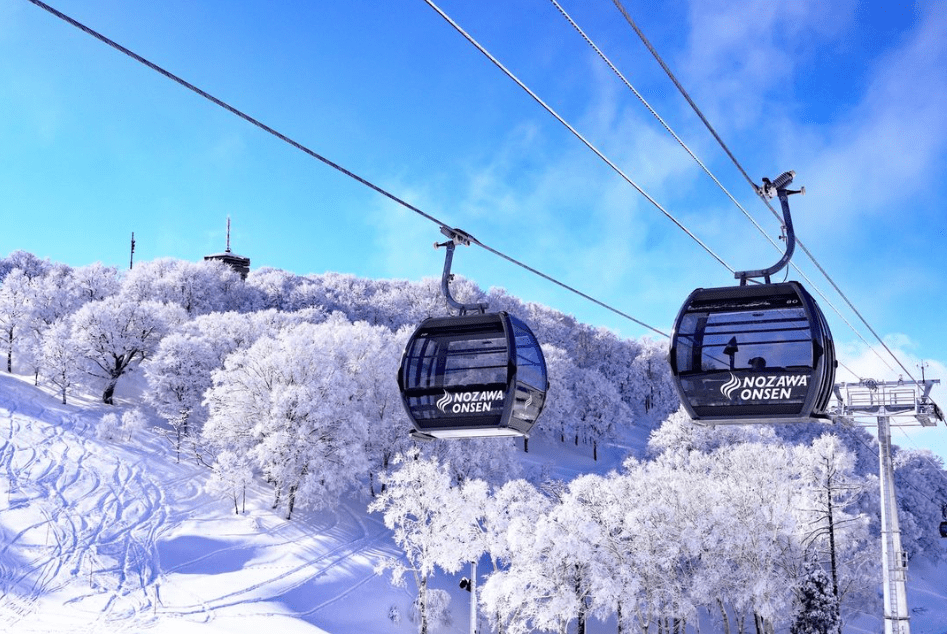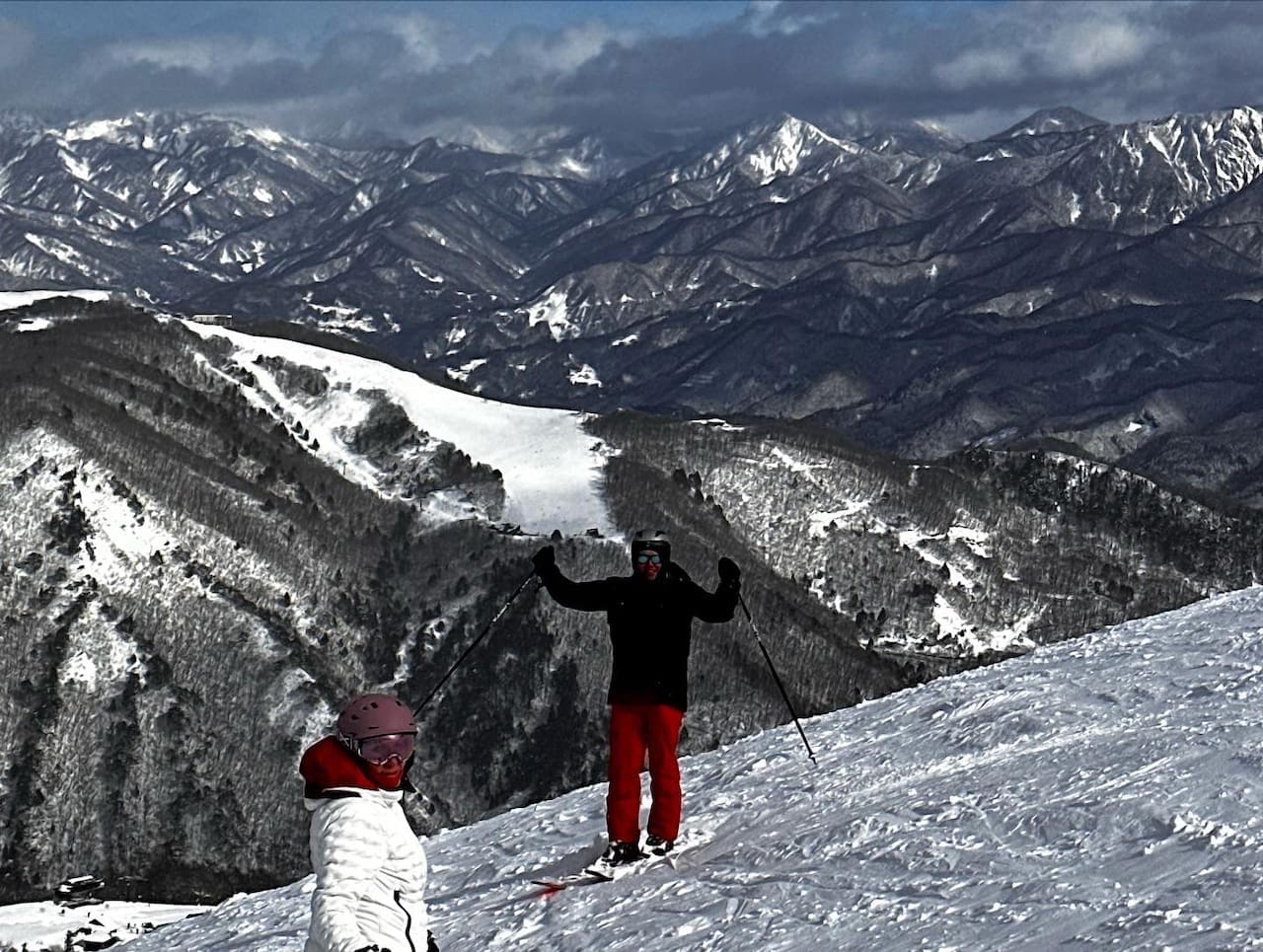Share This Article
The town of Zao Onsen has been an important destination for over 1900 years and the ski resort has been active for over 100 years. So there is plenty of history associated with the town and it is one of the most famous ‘onsen’ towns in Japan.

The first thing that will hit you when you arrive is the smell of the sulphur and the clouds of steam coming up from the pipes, drains and streams where the hot volcanic water races its way down through the town. The volcanic sulphur waters are used in bath houses around the town and even up on the mountain and were historically referred to as the “Bath of Beautiful Women” as the water is said to have a rejuvenating effect on skin and blood vessels and there is no question that a good onsen soak is a fantastic recovery after a hard day of skiing.
But the sulphur smell does take a little getting used to!
GETTING THERE
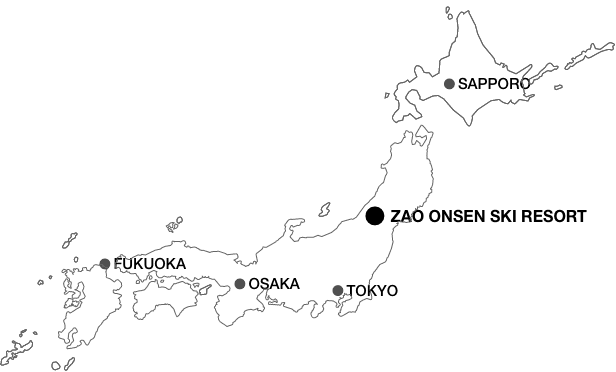
Zao Onsen is about three hours from Tokyo if you get a Shinkasen (well its two and a half hours on the train to Yamagata and then you need to take a taxi for bus up the hill which will likely take you at least another 30 minutes).
If you have a car it is about five hours drive from Tokyo, approximately an hour and a half from Sendai and three hours from Niigata.
There is a bus that will bring you direct from Sendai Airport (1 hr 20 mins) and another bus that will bring you up from Yamagata Station (40 mins).
ABOUT ZAO
Zao has been a travel destination for over 1900 years as people came to bathe and soak in the onsen waters and so it does have regular tourism all year round as people come to enjoy the health and relaxation benefits, the water here is the most acidic hot spring in Japan. The water is also REALLY HOT!!! Source temperature 50.8ºC the PH is 1.9. But according to what I have read the sulphur springs have a very positive effect activating the muco-polysaccharide proteins in the body (anyone understand what that means?) which rejuvenates the skin and the blood vessels. Claims are it is good for skin ailments, diabetes, and hypertension – who knows I came out feeling very relaxed so maybe it works!
Zao is most famed for its ‘Snow Monsters’ which are found right up at the top of Mt Zao. To get up there will probably require you to take (depending where in the village you are coming from) 3-5 different lifts with a large ropeway gondola taking you up the ascent to the highest point.
The first thing you notice as you climb the hill, is it is actually a big mountain, there is a vast amount of terrain 305 hectares of it and you drop 881 meters as you ski from top to bottom. Which if you go the long way round will take you on a 10 km run that will challenge your legs and build up plenty of lactic acid!
The lifts at Zao are a funny mishmash of equipment, there is one gondola and two tram ropeways that ferry people up the hill, then there are 36 other lifts ranging from the questionably safe single pizza box to doubles and chondola quads.
WHATS IT LIKE TO SKI
The skiing offers a variety of terrain for beginners and intermediate, however there is not a huge amount of advanced and challenging terrain but there is plenty of fun to be found. Lower slopes are mostly gentle and wide open providing great opportunities for beginners, the Chuo, Paradise and Diamond area’s offer excellent quality snow.
The most difficult slope is the ‘Yokokura Wall’ a steep 38º face which is quite challenging for about 400 meters before opening out onto easier terrain. Paradise slope also has a steeper section where the gradient gets to over 25º for a while but all in all this is a really good intermediate mountain rather than super challenging.
The resort is a bowl that curves around the village with runs that head up in a 200º radius, it can take a few runs to get your head around how to get from one side of the mountain to the other.
As you might expect there is a restaurant at the top and it is a place that lots of visitors come up just to see the snow monsters (juhyo) walk around and take a picture. The views can be amazing but often you are in the swirling clouds.
Up at the top you will also see a statue of Jizo (who is the guardian deity of children) which is usually covered in snow. Skiing from the top however is actually slightly anticlimactic, its a narrow trail, a little steep, likely to be slightly icy, (there was marginal cover on our visit in 2024) and so a large number of beginners make it slow and congested. But thankfully you are able to quickly get out and ski down Utopia through to Shobunuma and onto the Ohira course. It is a bit like following a motorway as you see numbers that guide you down the hill at each cross trail!




Zao has had little western influence to date, accomodation is in Ryokans, Lodges and Hotels some offer western beds and menu options but many do not. You may find that accomodation requires you to take the meal plan for breakfast and dinner. For Western palates the breakfast of fish, pickles, miso soup, cold vegetables etc can feel a bit foreign but for me that is huge part of the charm in experiencing something totally different.

WHERE TO STAY
Accomodation in Zao ranges from very traditional Ryoken to Hotels, Lodges and budget accomodation so there are a good range of choices available. However if you are looking for big name hotels and luxury, this is not your mountain (see Appi Kogen).
- Takamiya Ryokan Miyamaso – Traditional accomodation with classic half board. Takamiya has two onsen hot springs on the property and the meals at breakfast and dinner are substantial (traditional Japanese). Rooms are excellent with traditional tatami floor and comfortable futon beds.
- Forest Inn Sangoro (Hotel and Lodge accomodation high on the slopes), you need oversnow transport to get to the hotel and you have limited restaurant alternatives once there. However the food in the restaurant is quite good and has a lot of variety (and the wine cellar looked ok too!)
- Takamiya Jurin Hotel (3 Star Hotel on the slopes but still in the village)
- Chikusenso Mt Zao Onsen Resort – A 4 star hotel with smart onsen pools (inside and out) traditional tatami floors and some rooms have private onsen baths.
- Daikon no Hana Onsen – a onsen hotel with 18 guest rooms in stand alone villas across 8 acres. (a little distance from the ski area).
WHERE TO EAT
There are lots of options for eating out in Zao and most of them are good food at very reasonable prices depending on where you are staying a few worth considering are:
- Sushikiraku Sushi
- Kajimaya Ramen
- Kasheru
- Otochaya
- Forest Lodge Sandoro – great food on the mountain with both Japanese and Western options and amazing pudding!
WHERE TO DRINK
There are lots of restaurants and izakayas around the village but they are all fairly sedate, the standout is the delightful Chamonix Bar which is right at the base of Zao Sky Cable. In this very cozy location you will find a reasonable range of wine, beer and sake along with snacks and an excellent jazz and blues collection that the owner will play as the day turns to night.
WHERE TO SHOP
Zao is not a major shopping destination while there are a few tourist shops (largely selling Japanese sweets) there is not a lot of things that you wont see better elsewhere. Takayu Street does have some nice shops including
- Yutabia Takayudo which has a lovely range of charming souvenirs at reasonable prices that represent the true Japan. This is my pick for best shop in Zao.
- Ito Yosaburo – just across the road from Takayudo is a smart bottle shop with a good range of beer, sake and some nice wines.
- Forest Inn Sangoro – which is right at the top of the hill has a pop up shop (for the Electric brand of Goggles) if you need to replace something urgently .
- Rossignol – has an outlet store in Zao which has a good range of ski and sports clothing including Rossignol shoes, however the sizes are a little limited – mostly small sizes when we visited.
- FamilyMart – a good convenience store and ATM on the main road (Jyuhyo Dori) .
WHERE TO SKI
Zao is a good sized resort offering a range of terrain and some good trail runs that connect on to open slopes, some steep and some less so. The steepest slope is an ungroomed and very short run at 38º it is quite steep but depending on your ability it is unlikely advanced skiers will be challenged at Zao but there is still plenty of fun to be had.
I found the snow quality to be best on the Kotan Slope and Sailer Course (another Toni Sailer designed area). The Utopia to Kurohime area and on to Omori is fantastic cruising if (a big IF) the snow is good quality. We visited early in the season (January) and found that there was very marginal cover on a number of the runs on that side of the mountain.
This is an area that gets a lot of snow though the region regularly gets over 30 meters of snow dropped in a season so go a bit later and you will be sure to enjoy the whole mountain.
There are plenty of places to rent gear around the mountain and there are seven different ski schools of which only two offer lessons in english
TERRAIN
Elevation Top | 1661m
Elevation Bottom | 780m
Vertical Drop | 881m
Highest Lifted Point | 1661m
Skiable Terrain | 305ha
Longest Run | 10km
Beginner | 40%
Intermediate | 40%
Advanced | 20%
Total Number Trails | 25 named runs (50km)
LIFTS
Gondola’s & Trams | 4
High Speed Eight | 0
High Speed Six | 0
High Speed Quad | 0
Quad Chair | 5 (some are covered ’chondolas’)
Triple Chairs |
Double Chairs |
Single Chair | 1
Surface Lifts |
Uphill Capacity |
SNOW
Avg Annual Snowfall |
Avg Snow Depth |
Snowmaking |
Total Number Guns |
Day Ticket | ¥6,500
Season Pass | ¥68,000
VILLAGE
Hotels | > 80
Restaurants | 46
Bars | 0
Cafes | 1
On Mountain Food | 2

LINKS
- Resort Website – https://zaomountainresort.com
- Resort Website (English) – https://www.zao-spa.or.jp/english/
- One of the seven ski schools – http://www.zao-skischool.com/
- Takamiya Ryokan – http://www.zao.co.jp/takamiya/
- Sangoro Forrest Inn – http://sangoro.co.jp
So what do you think about Zao Onsen? Its a resort we will be visiting again soon so perhaps you might want to join an Alamanak Tour in late 2024 / 2025 to some Japan’s less known ski resorts.



